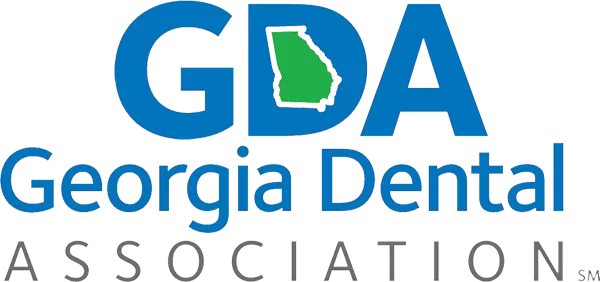Dental bridges do precisely what their name suggests: they bridge the gap created by one or more missing teeth. The bridge is made up of two or more crowns for the teeth on either side of the gap and a false tooth/teeth in between. The anchoring teeth are called abutment teeth, and the false teeth are called pontics. Dental bridges can be supported by natural teeth and or implants.
There are several types of dental bridges, including traditional dental bridges, cantilever bridges, Maryland bridges, and implant-supported bridges. The suitable choice for your situation is dependent upon various factors, including the health of your surrounding teeth, the number of missing teeth, cost considerations, and personal preferences.
In the course of this article, we will delve deeper into these bridge types, detailing their unique characteristics and application. We aim to provide you with a comprehensive understanding of the dental bridge treatment process, the associated benefits, and the candidacy requirements. Lastly, we will provide tips on caring for your dental bridge to ensure its longevity and effectiveness.
As experienced dental professionals, we at Dentistry & Orthodontics are proud to serve the Kennesaw and Lilburn, GA, community, offering our patients the tools and treatment options needed to restore their smiles and enhance oral health. Keep reading to learn more about dental bridges and how they might benefit your smile.
1. Understanding Dental Bridges and their Types
Dental bridges offer a functional and aesthetic solution for individuals who have one or multiple missing teeth. There are four main types of dental bridges:
– Traditional Dental Bridges: A traditional bridge consists of one or multiple pontics supported by crowns on either side of the gap. The supporting teeth, called abutment teeth, are shaped to accommodate the crowns. Capping the abutment teeth with crowns provides stability and strength to the bridge.
– Cantilever Bridges: Cantilever bridges are similar to traditional bridges but require only one abutment tooth instead of two. This type of bridge is suitable when there is only one healthy tooth next to the gap. However, cantilever bridges may not be the optimal choice for missing back teeth due to the increased pressure during chewing.
– Maryland Bridges: Maryland bridges use a framework made from metal or porcelain to bond the pontic to the adjacent teeth. Unlike traditional or cantilever bridges, Maryland bridges do not require the preparation and crowning of adjacent teeth. Maryland bridges are less invasive but may not be suitable for areas that experience significant biting force.
– Implant-Supported Bridges: Implant-supported bridges use dental implants for support rather than relying on natural teeth. An implant is placed into the jawbone for each missing tooth, and these implants hold the bridge in place. Implant-supported bridges are the most stable option and offer additional benefits, such as preventing bone loss.
2. Process of Getting a Dental Bridge
The process for getting a dental bridge at Dentistry & Orthodontics typically involves the following steps:
– Initial Consultation: Our expert family dentists will assess your oral health, discuss your options, and develop a personalized treatment plan. This may also involve taking dental impressions and radiographs.
– Teeth Preparation: If you are getting a traditional or cantilever bridge, the abutment teeth will be shaped to allow room for the crowns. For Maryland bridges, shaping is minimal since crowns are not required.
– Temporary Bridge: A temporary bridge may be placed to protect the prepared teeth and maintain your chewing function while the dental laboratory fabricates your permanent bridge.
– Bridge Placement: Once your permanent bridge is ready, our dental team will perform any necessary adjustments to ensure a comfortable fit and proper function. The bridge will then be securely bonded to your teeth.
3. Benefits of Dental Bridges
Dental bridges provide several benefits, including:
– Restoring Your Smile: Replacing missing teeth can have a significant impact on your appearance and self-confidence.
– Improving Speech and Chewing: Missing teeth can make it difficult to pronounce certain words and cause discomfort while eating. Dental bridges address these issues by restoring proper tooth function.
– Distributing Bite Force Evenly: Dental bridges help redistribute the biting force across all teeth, reducing the stress on the remaining teeth.
– Maintaining Facial Structure: Tooth loss can lead to changes in your facial structure as your jawbone resorbs. Dental bridges help maintain proper facial shape and balance.
– Preventing Tooth Shifting: When a tooth is missing, adjacent teeth may shift towards the gap, causing misalignment issues. Dental bridges keep neighboring teeth in place.
4. Candidate Suitability for Dental Bridges
Dental bridges may be a suitable restorative option for individuals who:
– Have one or several missing teeth
– Have healthy teeth on either side of the gap
– Have a healthy jawbone to support an implant (if opting for an implant-supported bridge)
However, every situation is unique, and it is crucial to consult with our experienced dental team at Dentistry & Orthodontics to determine the best course of action for your specific needs.
5. Caring for Your Dental Bridge
Proper care is essential to maintaining the longevity and functionality of your dental bridge. Here are some tips to ensure the success of your restoration:
– Practicing Good Oral Hygiene: Regularly brush and floss to keep your teeth and gums healthy and prevent gum disease or tooth decay around the bridge.
– Using Specialized Dental Floss: Use a floss threader or water flosser to clean beneath the bridge and around the abutment teeth.
– Visiting Your Dentist Regularly: Schedule professional cleanings and check-ups every six months for ongoing assessment and maintenance of your dental bridge.
– Avoiding Hard or Sticky Foods: These types of foods can damage the bridge or cause it to come loose.
Conclusion
Dental bridges offer a highly effective solution for those with missing teeth. At Dentistry & Orthodontics, we are dedicated to providing comprehensive restorative dental services, including dental bridges, tailored to suit the unique needs of our clients. By understanding the different bridge types, treatment processes, benefits, and care tips, you can make an informed decision about restoring your smile.
Are you struggling with missing teeth and looking for a functional, aesthetic solution? Dental bridges could be the answer you need. Dentistry & Orthodontics’ team of expert family dentists in Kennesaw offers a wide range of restorative dental services that includes dental bridges, a popular and effective treatment for patients with one or more missing teeth. Contact our skilled team today to schedule a consultation and discuss your options for a healthy, beautiful smile.







